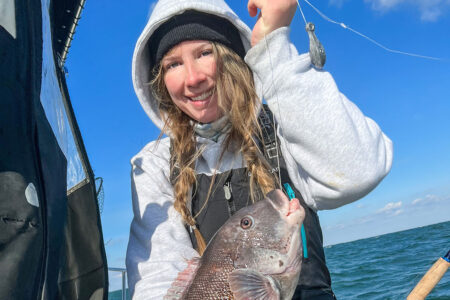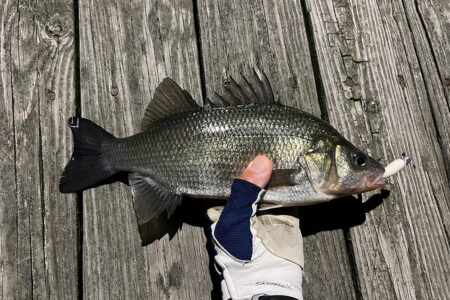PLAY THE AUDIO BOOK OF THIS FEATURE:
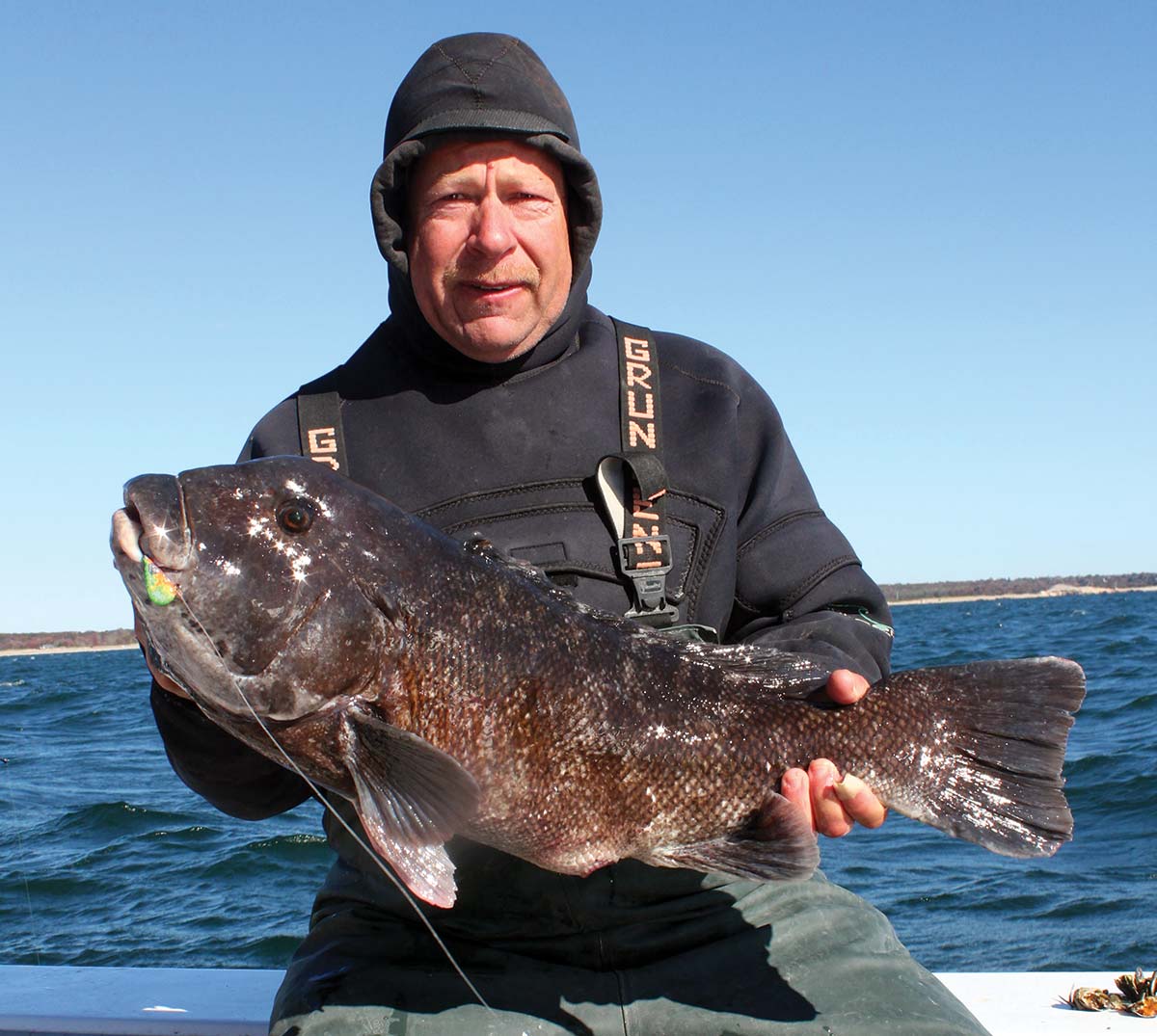
The fundamental components to becoming a successful blackfish jigger.
It was in October, 2010 when a regular customer named Mike got on one of my open boat tog trips out of Westport, MA carrying only what looked to me like a light spinning rod. I told him that his rod and reel were inappropriate for what we were doing and he assured me that he would outfish everyone and make me change my attitude very quickly. All I heard was a bonehead saying, “Blah, blah, blah…” I figured once a blackfish had its way with him and wrapped him in the rocks he could then change over to one of the many good rods I had aboard. When I’m wrong, I’m wrong, and boy was I wrong this time!
That day, Mike proceeded to put on a clinic which showed definitively how, in the right hands and under the right conditions, a spinning rod with a baited jig can easily outfish a conventional blackfish outfit while also having the added benefit of being a whole lot more fun. While there can be a bit of a learning curve in getting used to fishing like this, the purpose of what you will learn here is to shave some time and effort off that curve.
I am blessed in Westport, Massachusetts because I have thousands of small rockpiles at my disposal, many of which I’m sure have rarely if ever been fished before, but the odds are pretty good that you have very similar structure in your local blackfish country.
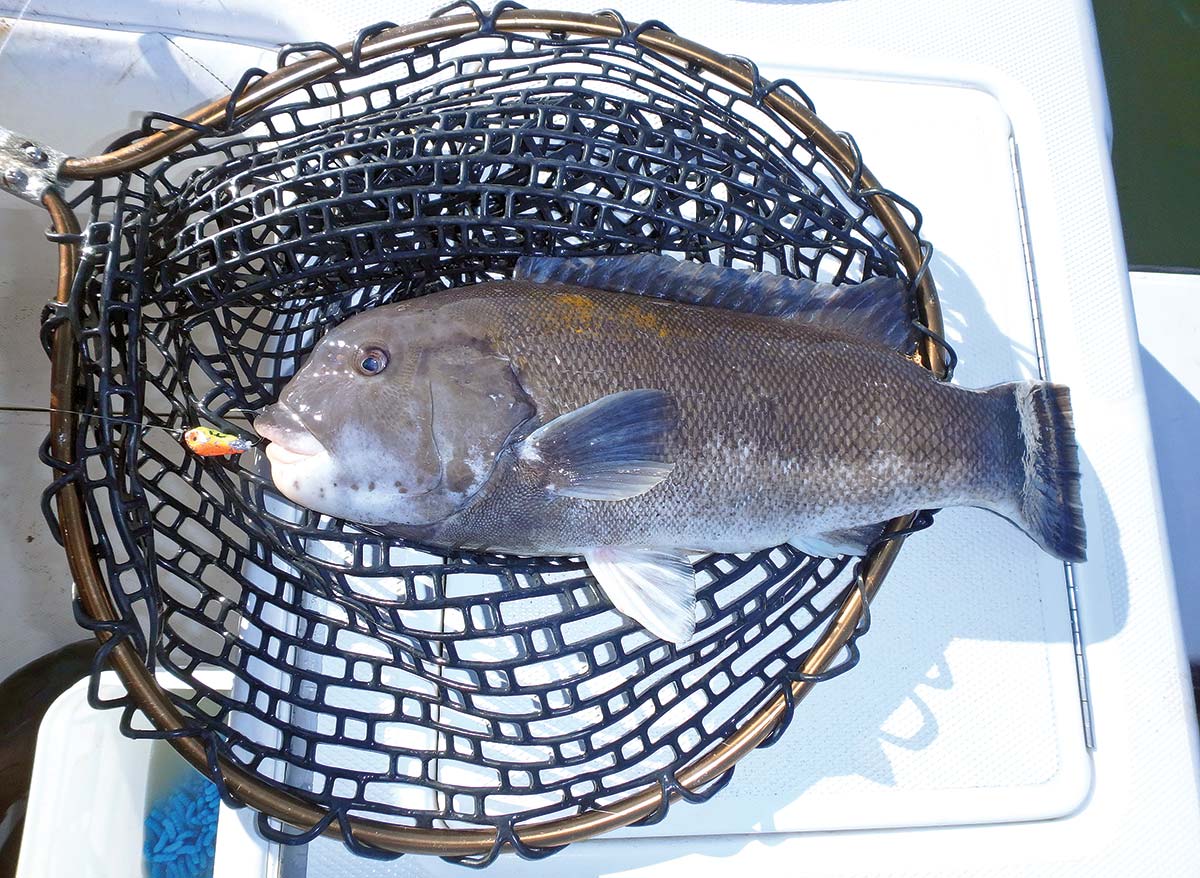
I try to anchor just up-current of the structure so my jig falls on or just to the sides of a rockpile or an individual boulder. When actively feeding, blackfish often swim right along the top of a large rock as well as along the sides so ideally you want to drop on the rock and let the jig fall off the down-current side.
What happens next is highly variable and again, takes a bit of getting used to in order to master. After going over some necessary items I will get back to “what happens next” when your jig is in position. Also, different people can use different methods they feel comfortable with, that work for them so I’ll just let you know what works for me.
Bait Preparation
I like to keep things simple and with as little labor as possible so I try to stick with baiting my hook only one of two ways. If the crabs are large (silver dollar size or more) I cut them in half on a cutting board (with a rag underneath because hard contact sounds against any part of your hull can get transmitted through the water column, potentially spooking your quarry), leaving the legs and claws intact. For these large cut crabs, I hook the bait through the last joint and out along the front leg sockets.
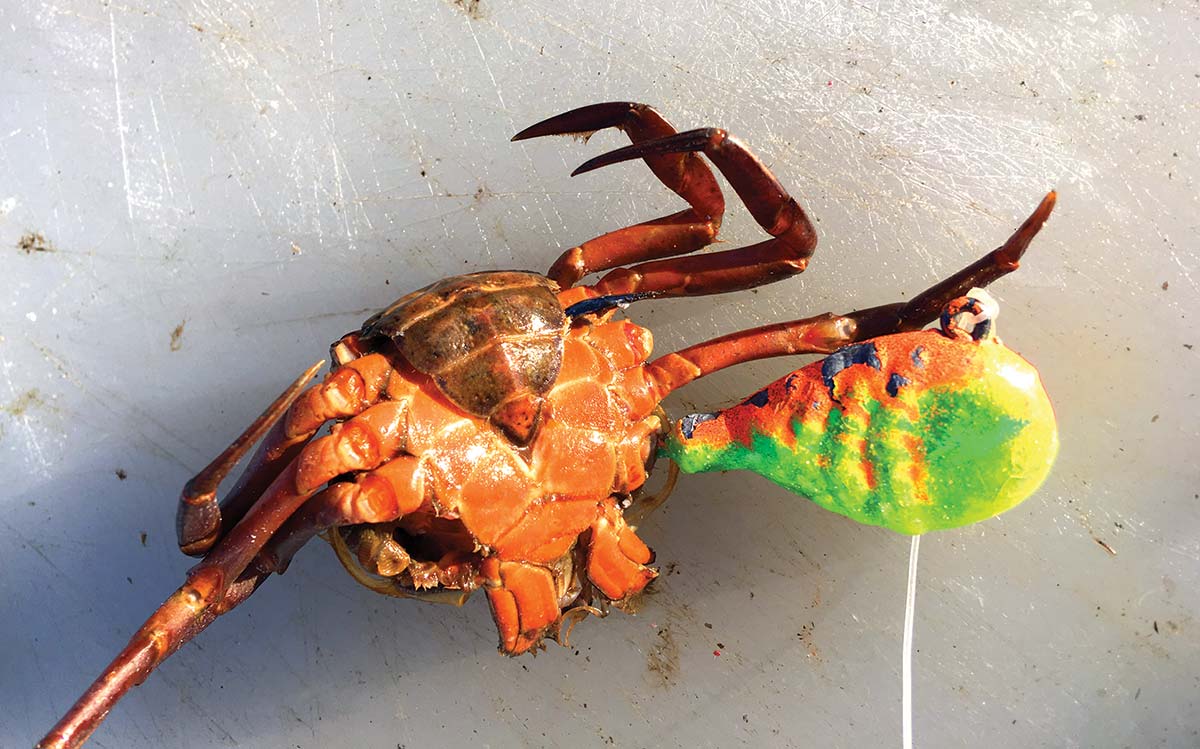
When the green crabs are smaller than silver dollars I fish them whole. I prepare the crab by first pulling off the claws and I pop the top shell off the body, exposing the internal goodies. This can take a bit of getting used to in order to do right, and some people find it much easier to simply crack the top shell with a sinker in the palm of their hand. This, much like cutting the crab in half, exposes meat and juices that blackfish can’t resist. With this method, hook the crab in the open joint where one of the claws you pulled off was. Turn the hook out the rear leg joints so it is completely exposed.
Finding Bottom
If you have been bait fishing with standard hook-and-sinker rigs for tog for any number of years, then you will quickly realize that a light blackfish jig (I use 1 ounce most of the time) gets to the bottom a whole lot slower. Also, once on the bottom, it is a lot more difficult to know when you have actually made contact. Add a strong current, wave activity or wind and you’re sure to be cursing me for even suggesting this technique. In those cases I opt for a standard tog rig and reserve the jigs for the timeframe around slack water – either high or low.
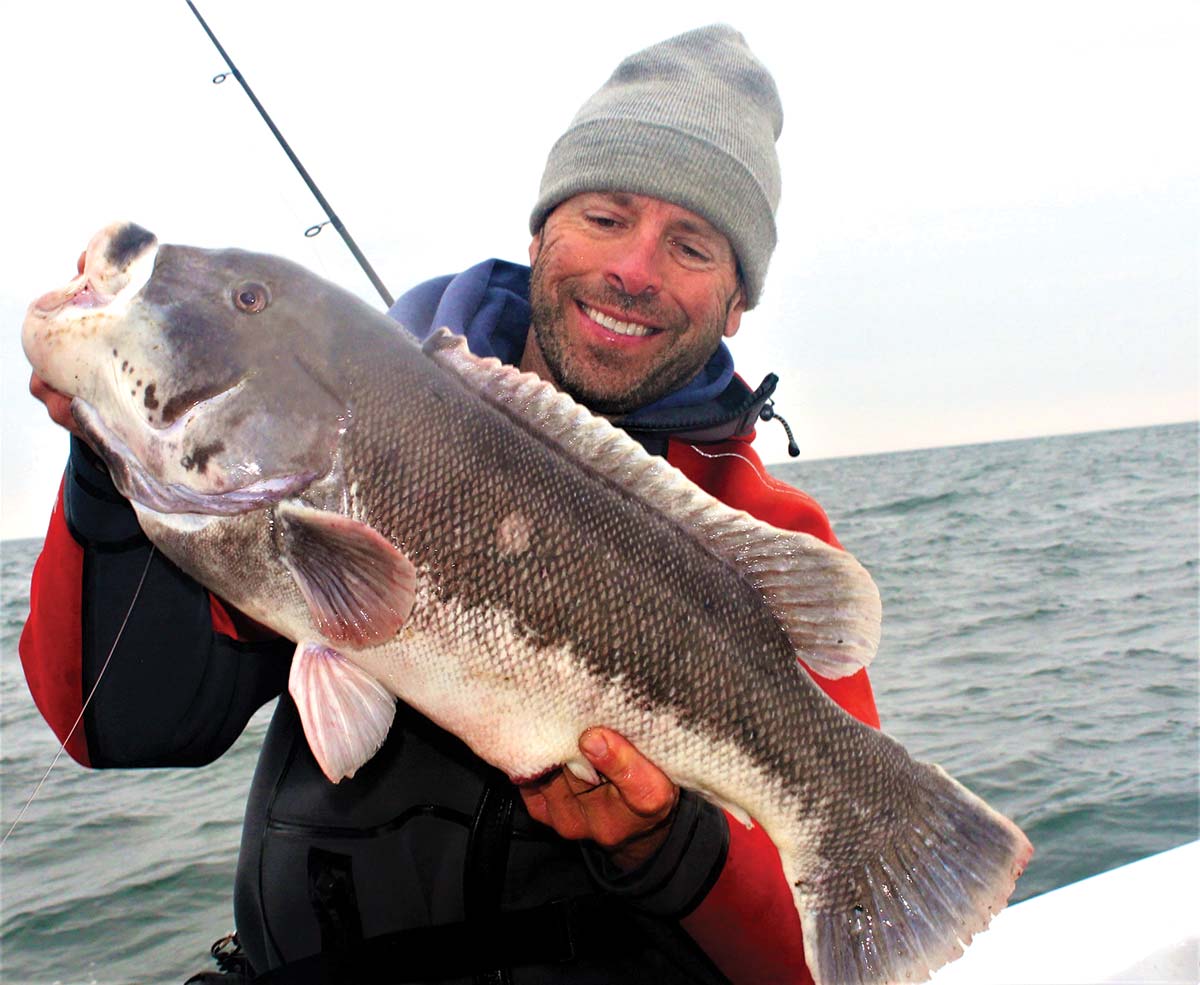
So back to finding bottom with a light jig; I find that by going down in 4- to 5-foot increments makes it easier to confirm when I’ve made contact with the structure. I do this by lifting my rod tip up over my head with the bail open, grasping the line with a finger and then letting the jig sink down as I drop my arm and rod towards the water’s surface. I continue to repeat this process until I see slack line form on the drop – a sure sign I am on the bottom – and then I quickly flip the bail over and ready myself for a strike.
Finally Fishing
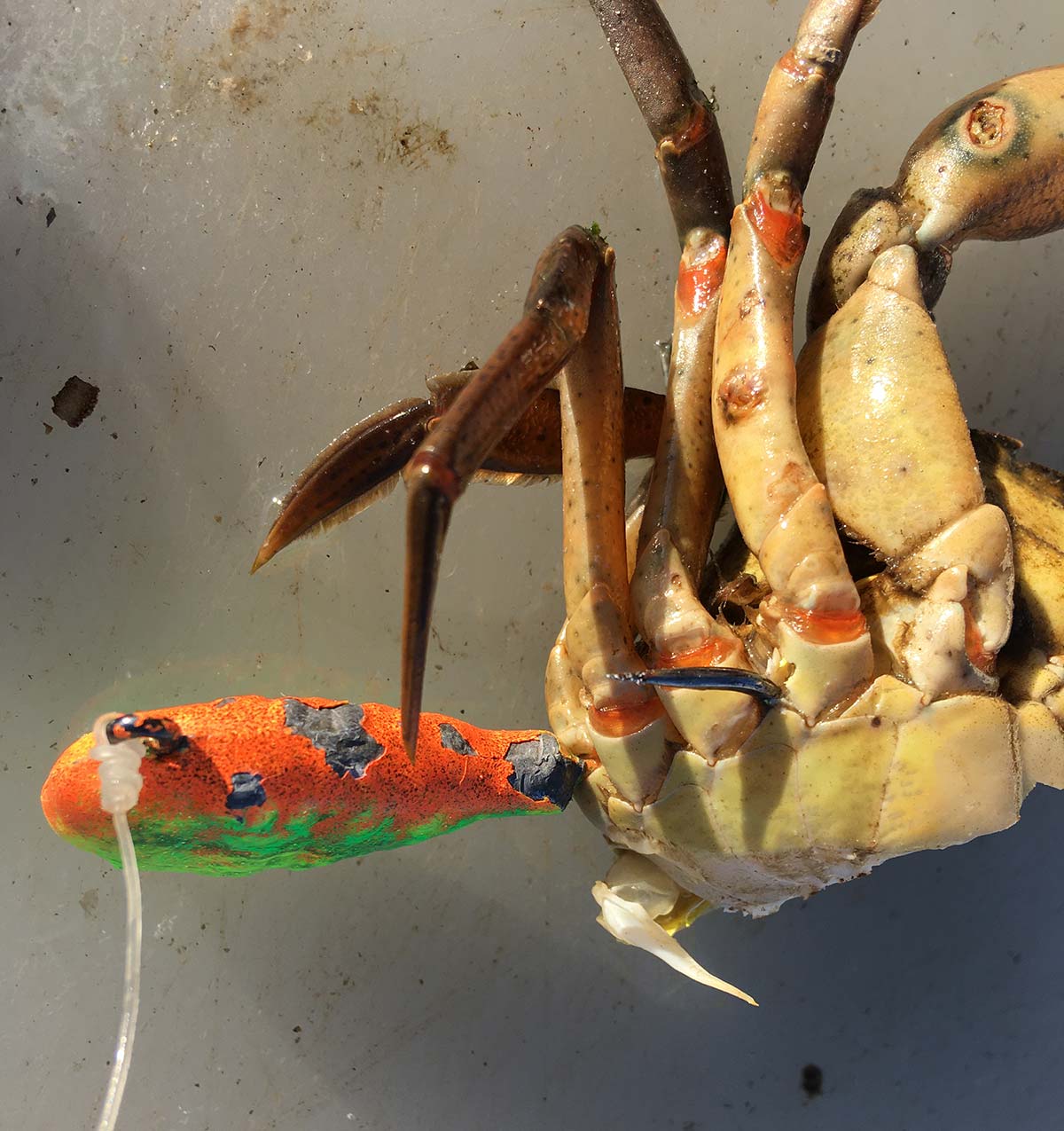
Here we are back to that “what happens next” part I referenced earlier. Once the bait is down deep, perhaps it is on top of a rock, or maybe it just got swept off the rock and you followed your line/jig to the bottom on the downside of that rock. Now you simply wait. I explain to the people on my boat that there are (in general) two types of bites. In reality there are probably thousands but for the purpose here we will limit ourselves to just the two primary ones: the “pecka-pecka” and the “chunka-chunka”. You have to get used to ignoring all the “pecka-pecka” bites and wait for the “chunka-chunka.”
And now for the kicker—you should try to figure all this out with your line containing a little bit slack. Again, it isn’t that hard once you get used to it. What I mean by “a little bit slack” is one or two inches of extra line after the jig is settled on the bottom. The idea is to have the fish pick up the jig and crab as one unit and begin to swallow the whole thing. If you have a 100 percent tight line the fish can feel the resistance that you feel and spit the bait, suspecting something isn’t right.
When you think a fish has your bait in its mouth, lift the rod tip about six inches and be ready to strike hard and fast if the fish is there. If there is no fish then simply lower the rod the same six inches and resume waiting. On those frequent questioning lifts you should begin to develop a sense of whether or not you still have a bait on your jig by the amount of resistance you feel.
Most tog jiggers have their favorite weight jigs, and for me where I fish the best range is ¾ to 2 ounces. If I need more than that I opt for a 6- to 8-ounce sinker and regular bait rig. Between the braid (30-pound test is just about right) and the jig should be a section of at least 40-pound monofilament, but some anglers go as light as 10 or 15 for the leader while others opt for 50- or even 60-pound leaders in the gnarliest of reefs and rockpiles. Perhaps those who go light like the added challenge, but I’d rather have a good shot at landing my fish so I stick with the heavier stuff. Spool that braid onto a quality saltwater spinning reel like a Tsunami Evict 4000 and match it up to a 7-foot medium-heavy spinning rod like a Tsunami Carbon Shield 2. You want a rod with plenty of backbone and tip sensitivity as well as a reel with a strong drag and powerful gears.
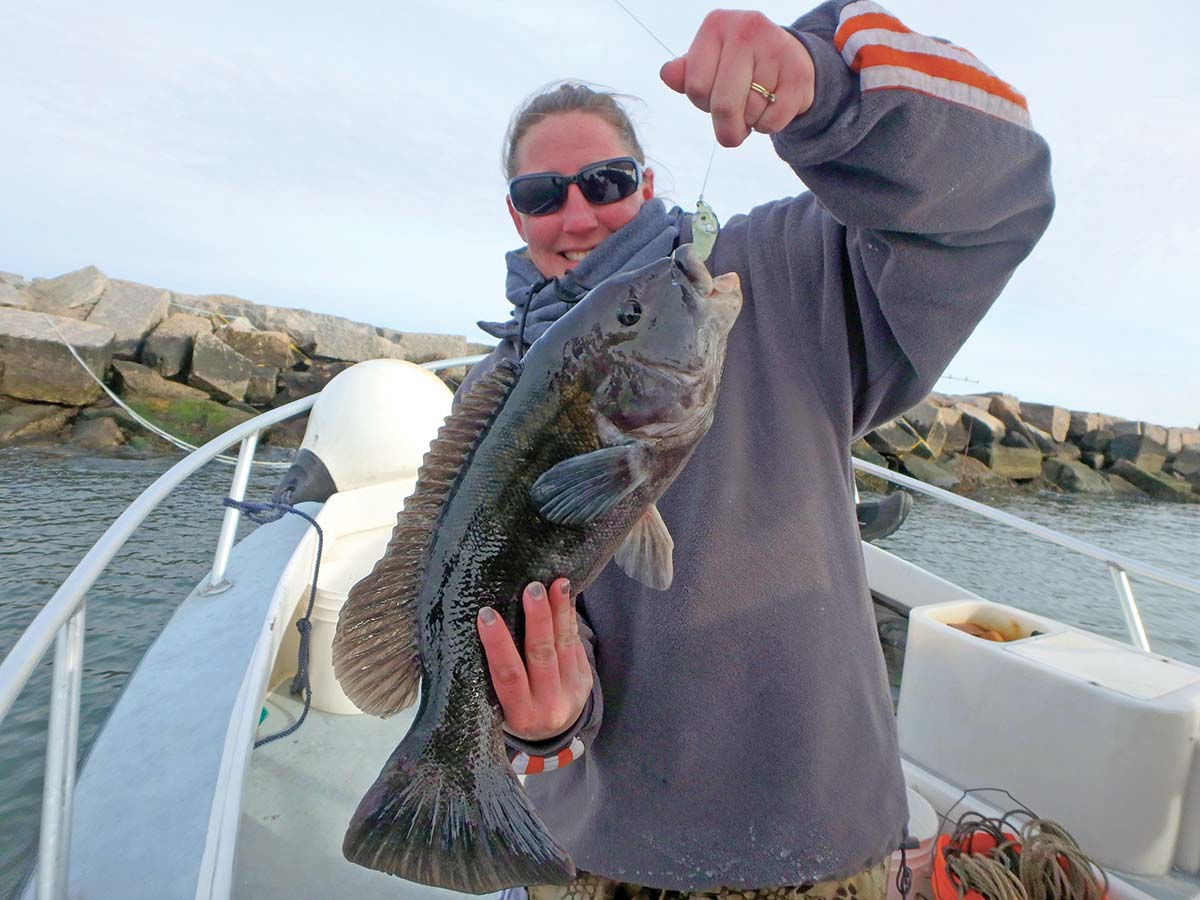
When it comes to specific jigs, everyone has a favorite. All shapes seem to work with some being better for certain spots, but I prefer the lima bean style as it falls pretty quickly in the lighter weights I use. Just make sure whichever jigs you use have a strong hook! You’d be surprised at how often I try some “Brand X” jig and the hooks straighten out on the first fish. By setting the hook to the bend, you can usually avoid that fate if the hooks are of good quality to start with.
My final point on jigging for blackfish relates to positioning on structure. In years past I had to set one or more anchors to get the correct spot over the structure, and as the tide and current changed it could be a process to adjust my boat’s positon. Well, for 2020 that has all changed as I added a Minn Kota Terrova Trolling Motor to my boat with the Spot Lock feature. The accuracy this provides is quite astonishing when it comes to getting over the exact spot I want/need to be in relation to the rock or rockpile, and fine-tuning my boat’s position couldn’t be easier. I would highly recommend one for blackfishing if you can afford the addition to your boat. As an added bonus, your back will appreciate doing away with the need to haul an anchor multiple times over the course of a day.

